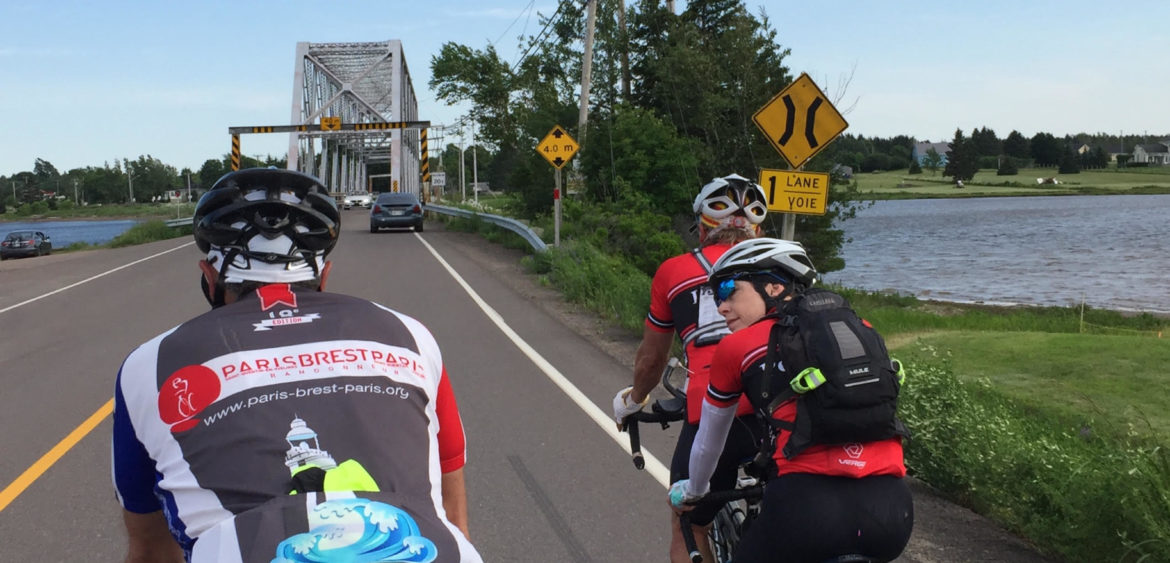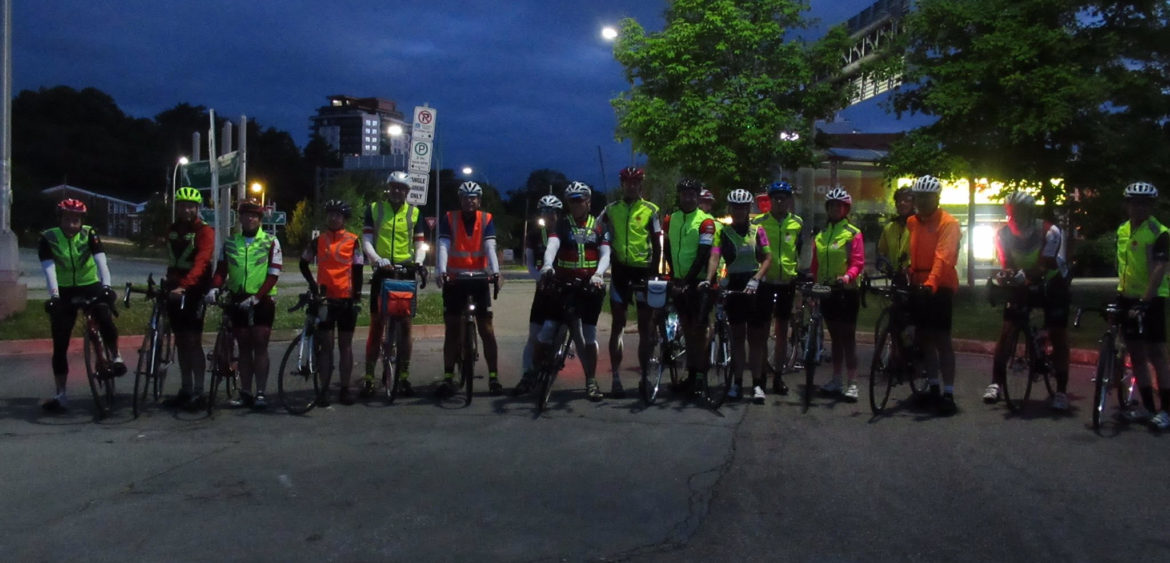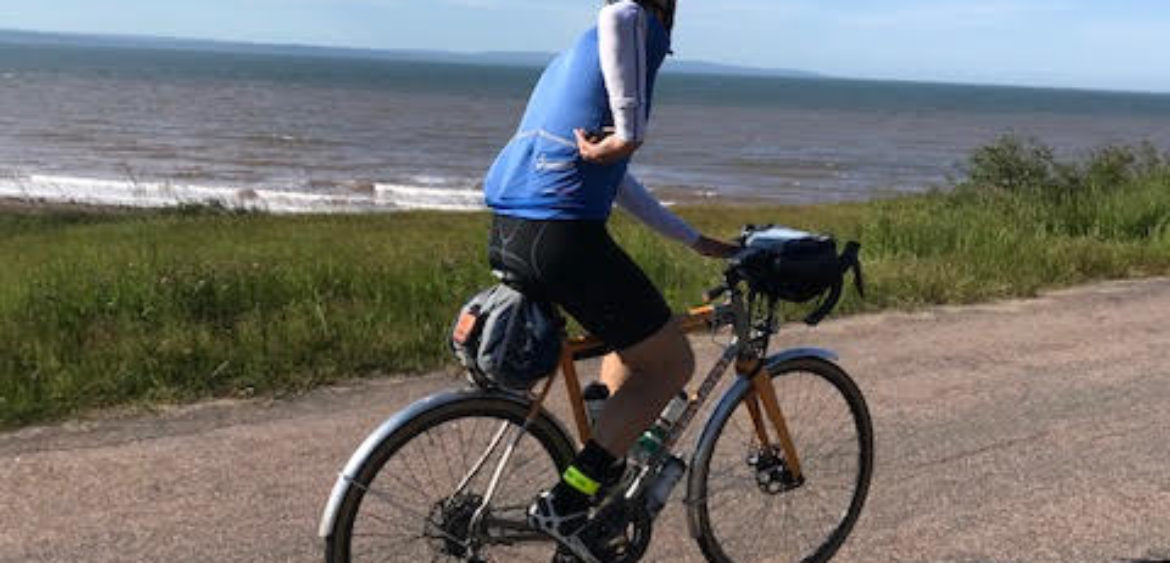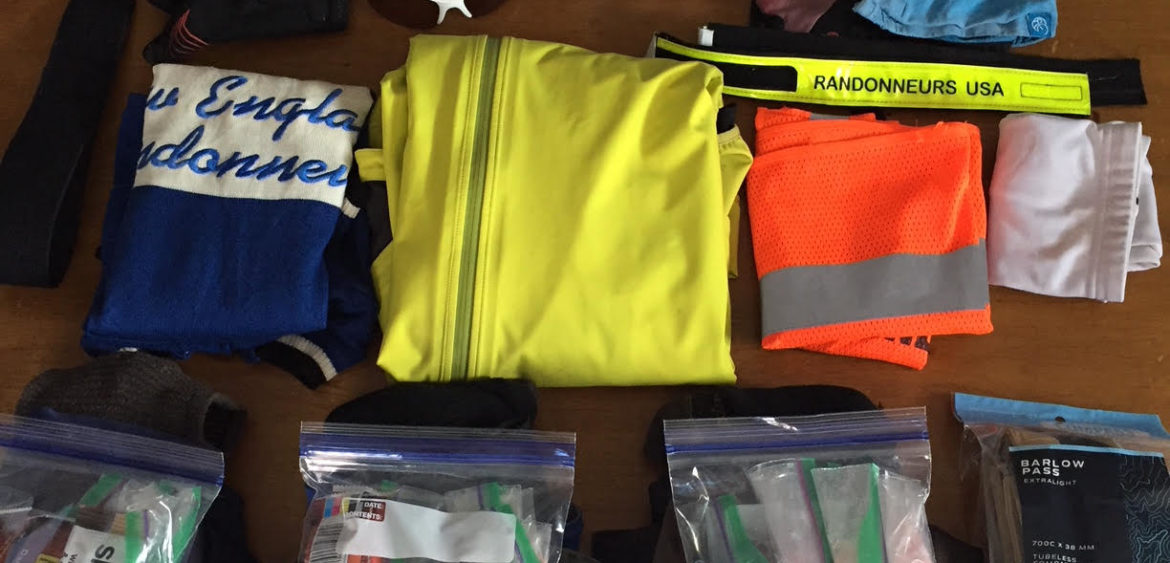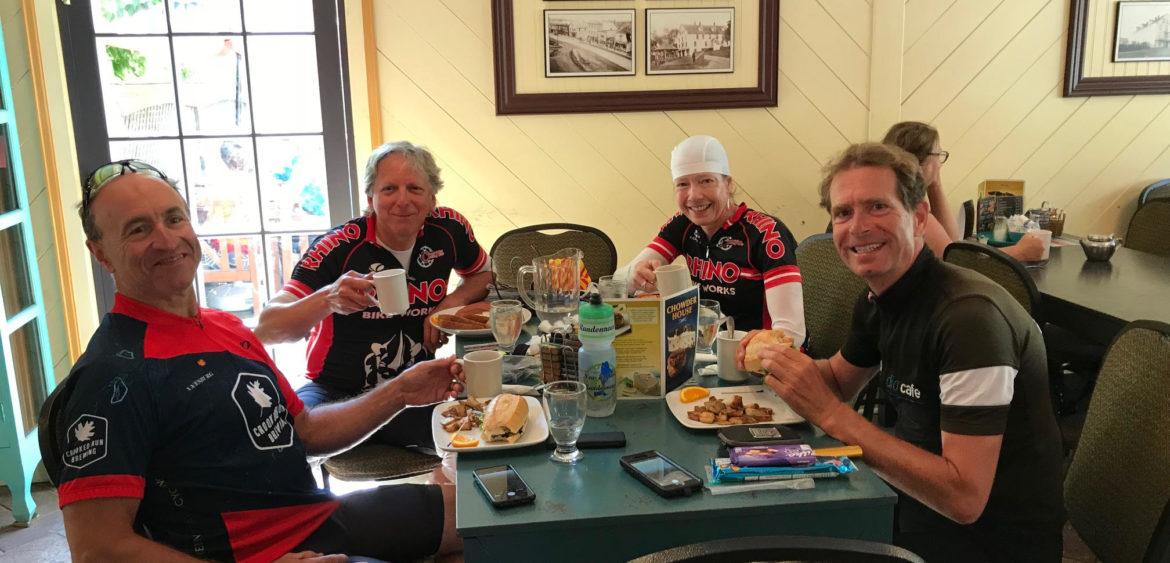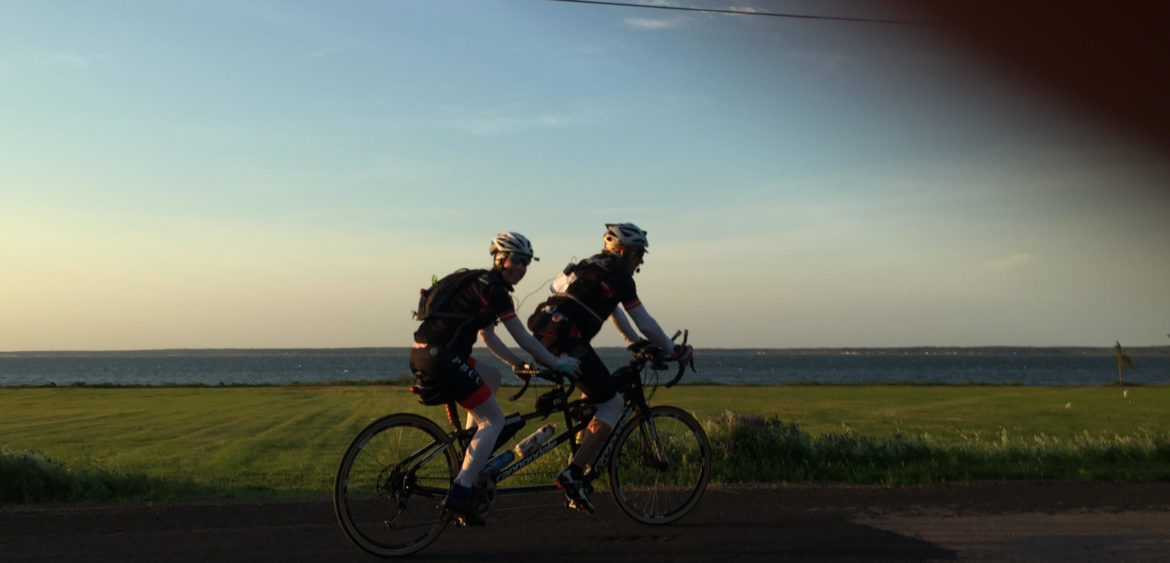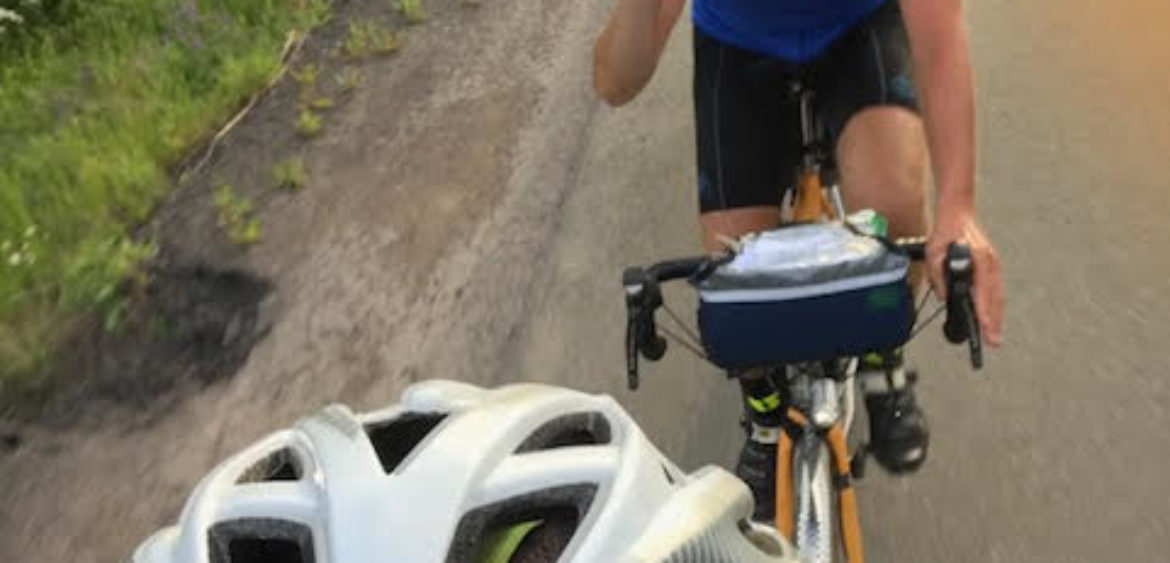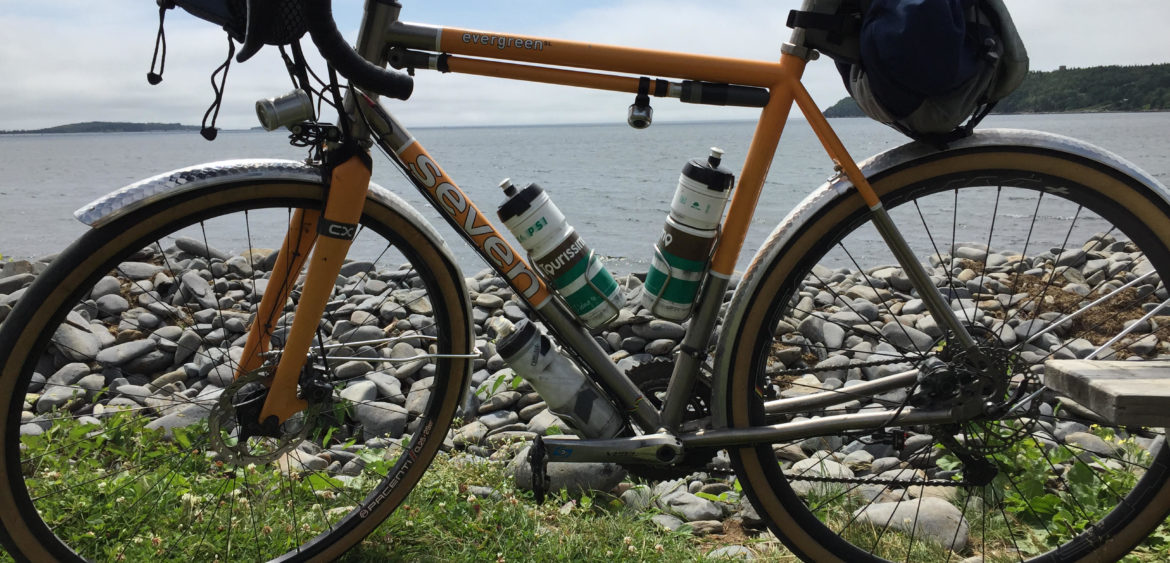A brevet is a predetermined route that needs to be completed within a certain time limit, typically on a bike. The routes are approved by RUSA (Randonneurs USA) or in Canada by Randonneurs Canada. Along the route, at strategic points, are controls with their own time limit. Note, you can also be too early and will have to wait. At these controls you need to get your brevet card time-stamped and initialed as prove you made it.
You’re in great shape; yeah? Hammering up a local climb, racing hard, or just taking a “quick spin” with friends. That was me.
But out of the blue, I experienced something last year, that I have since learned is way more common than you might think, and especially in the endurance athlete community in which we’re a part of.
About a year ago, I was getting into some winter training, and I was feeling a little off. Not terribly, but just like, “holy cow, am I really that out of shape?” I was riding on an indoor trainer, and just feeling like I lost a lot of fitness. Every now and again, I’d feel more fatigued than I should, and way sooner than I should. I attributed it to just being a slug and out of shape, and vowed to fix that.
The Symptoms
Come (very) early spring, and I get on the bike outside, put on my HR strap and start riding. Up the Minuteman Bike Trail towards Lexington, in fact, to just do a nice easy Concord/Carlisle loop. I hit the Arlington/Lexington line, and I had to stop. I just could not get the bike to go, and I was feeling weak. Strange. Out of breath for some reason, even just warming up. Didn’t bother to look at the HR number, because I did not feel beat up, just, weird. 10 mins later I was off and riding, and felt fine. Hmm…
A few more rides, and every now and again, I’d feel this “off” feeling. I looked down at my Garmin and my HR was showing 205. Woah. I put my fingers on my carotid artery, and could not really count my pulse. I *had* been riding after all, but I was not winded, it did not feel like 205. (what DOES 205 feel like??) Sometimes all was perfect. Sometimes I could hammer up hills with no problem, others I could be cruising home at 14mph and the HR just goes through the roof.
Changed out batteries, used different HR straps, borrowed a friend’s runner’s Garmin to have two going at once, and I was seeing really strange stuff. Most of the time, okay. But when I “felt like this” they did not agree, one saying 78, the other 215, and knowing I should be in the 140’s based on what I was doing. I started reading. Could not find a thing.
April comes, and I went out to do the Midnight Ride of the Boston Marathon, with the group going out at 9, and back at midnight. Felt great. Got out past BU, and there it goes again. Felt like I could not generate power. I did not feel winded, nor did I feel like my heart was racing. I took it easy, and thought I could just ride through this feeling, rather than stopping for the 5-25 mins till my heart “reset” itself. Finally at Framingham, my friend and riding partner said he was not going to let me be any more stupid than I had been, and forced me to call for a ride home. I decided then to see a cardiologist. This was not just “oh well” stuff.
The symptoms were like this – at times, unpredictably, my heart rate would show as 215ish, with perhaps another monitor showing 78. I felt weak-legged, but usually not winded, but unable to generate power. Wait anywhere from 5-25 mins, and everything was all better, and I could hammer the rest of the ride. This happened sometimes. Sometimes 3x in a 4 ride week, sometimes not for 3 weeks at a time. I needed to figure this out.
Testing and Diagnosis
First up, a base EKG. All was normal. 54 resting HR, perfect EKG. So the next step was a stress echo-cardiogram. This is “the stress test” you hear of. So into the lab, and they took some baseline EKG and vitals, and did a resting echo-cardiogram (sonogram) of my heart. Made sure they knew I am one of these endurance athletic nut-jobs because as we know athlete heart measurements will often be very different than “normal” people. All good. Then came the fun.
The stress test is a treadmill, periodically increasing in speed and incline at time intervals (called the Bruce protocol) starting at a stroll, and progressing till you get above certain levels for them to then take stress readings. Still all good. We kinda shortened the intervals because it would have taken quite a while to get me up to the levels for the stress readings (took forever just to get me to 140BPM and they needed over 165 sustained). Got there, all good. Felt fine.
Jumped onto the exam table because they have to take the stress echo before the HR comes back down. No sooner did I lay down, that the “condition” I’m concerned about started. HR of 222, and based on what they saw on the EKG, VT (Ventricular Tachycardia). Not SVT, but VT, which I’m told is the not-better variety of VT.
Tachycardia is the doctor name for a really fast heartbeat; which is not fibrillation, which is fluttering. They went into o-shit mode, because they said often this (a 220+ HR) leads to the patient passing out, having an MI (heart attack) or other not good things. Thing is, I felt fine. No dizziness; just felt normally out of breath from running at a 9min/mi pace for a while (yeah, I know, I’m slow on foot,) and they called in a doctor and they go for the defibrillator and they’re about to put shock pads on me to get my heart back into rhythm. To which I said “I feel fine, you’re not shocking nobody!” and the doctor and I started chatting, and I was joking with him while my HR stuck in the 200+ range – They told me that most people would be nauseous, passed out, or other unpretty states and likely be sent to an ER, but I told them that when this happens during a workout, I pause for 5-20 mins, and it then feels okay, and I go on normally.
They kept telling me I was likely “fine” through this because of my cardio fitness, but of course, this VT is, well, bad… As in “what the hell are you doing feeling fine, you should be laid out” bad… So they ran the monitors and watched, and watched, and watched, and we chatted, I sat up, stood up, walked around, we BS’d, but the HR stuck in the 190’s in VT. Gave it a buncha time but it did not do it on it’s own, and they could not send me home in VT even though I felt perfectly fine – so they (over my objections, I wanted to wait longer but…) gave me an injection of a beta blocker that should kick my heart out of this state and back in rhythm. Boy did it. 30-45 sec after the shot, my chest felt like when you pop the clutch push-starting a manual transmission car. Strangest sensation I’ve ever felt. HR went from 195 to 4 and then 98 in a matter of about 5 seconds.
They tell me this was an education for all of them, because no one they ever saw in VT of 222 was just able to sit up, walk around and chat about it. First lesson – we’re in great shape, and this can really help us get through a cardiac event, but don’t ignore it (like I did for a while)!
So from reading the results, they now think it’s electrical in nature, originating from the lower part of the left ventricle.
Your heart is an electric pump. Simple. Only 3 things in general can be wrong with it. Plumbing, structure (the muscle itself) or electricity. So they think it is electrical from the results and amazingly, they could tell about where in the heart. So next is to rule out plumbing or structure as the cause (and see if any damage has been done based on this or prior events).
“A Hugely Massive Debugging Effort”
The next step was a cardiac catheter. Basically an angioplasty, with hopefully no “plasty” needed. It involved putting a tube in the femoral artery, and snaking it up into the heart, and looking around in there of any signs of plaque, narrowing or hardening. (you don’t feel it; there’s no nerve endings on the inside of you ;-) After all, at 54yo, it’s certainly possible. I also learned that endurance athletes are often times prone to developing this.
Good news is that the cardio catheter procedure went okay. Bottom line there is all of the cardio plumbing is in great shape – no blockages, narrowing, calcification, so one assumed-to-be-not-the-cause has been confirmed.
Next step was the cardiac MRI, to look at the heart muscle for any signs of damage, again, assumed to not be a problem, but they want to make sure. Non-invasive, but totally not fun. Over an hour in a noisy cylinder (glad I’m not claustrophobic) with tons of ~45second breath holds not being able to move, and even worse, not being able to scratch the itches on my nose which you never notice until you’re in a tube, not able to move for over an hour. End result – thankfully, no damage to the heart muscle from these VT events. So structure and plumbing are good – it is indeed electrical. The way they fix this is in an electrophysiology study and ablation to obliterate the offending circuit(s) that is/are causing the problem.
The EP lab is no joke. Essentially, they wired me up with dozens of electrical leads, with the idea of inducting the VT (They do this with drugs, another cardiac catheter and electrical stimuli), making a circuit map of the heart and zapping the cells generating the spurious electrical signals.
So, the good news. Doc says my heart is incredibly strong, healthy and resilient. He should know; he spent 2+ hours poking around inside it. Not as in for someone old like me, but very healthy as in like a 30 year old! Bad news – my biggest fear – they could not induce the tachycardia so they could not fix it (at least not yet). They can’t ablate it unless they can map the circuits in the heart, and they can’t do that with me on a treadmill. And they got really aggressive with meds, electrical stimuli, multiple shocks (yeah, as in… 200.. Clear! Boom!) and other fun and games to induce. They actually put me in cardiac arrest 4 times and I would not stay dead. Good thing is I was unconscious for it.
Next step is to see what we can do to get the data – so I got to wear a 24×7 monitor and go work out and try to recreate the events and get more data. Yeah, they said go out and try to make this shit happen – go figure. Then they decide whether to try this again since it has been so much fun already, and/or try to prevent it with meds (before I work out, or if it happens, pop some med to bounce me out of the event). But he said I should not die from this (comforting) because of my fitness and the nature of the tachycardia.
Fast forward 4 weeks and two 2-week monitors later, and no events. Good news; yeah? Well, all this says is we can’t make it happen on demand, but what happens if I am in a triathlon and it hits during the swim?
The only thing is really to just try another EP lab and ablation, with the theory that perhaps the anesthesia impacted the ability to re-create the problem in the first lab.
So hell, we don’t need no anesthesia. If they can’t get it this time, I decided not to keep doing these. Not very fun and rather pricey. I’ll just have to figure out how to live with it and hope it disappears as mysteriously as it showed up.
So, last EP lab…. Did it with (almost) no anesthesia other than local which meant I was awake for the whole thing and got to experience every feeling imaginable – just… woah… The plan was to do it this way because it’s intermittent and unreliably reproducible and my instructions to the docs were to do ANYTHING necessary to give us the best chance to repro it. If we can repro it, fix it. However, if we could not, 2 choices – 1) Do nothing and just live with it and do something further on if it becomes more prevalent or more life-impacting or.. 2) Use research to tell them where to ablate given most likely area of the left ventricle So… Going into the left means puncturing the septum because they can only really catheter enter the heart from the right. Going there if we can repro it is a no-brainer – we know where, and zap it. But… going thru the septum to zap where we *think* it is *most likely* originating given we can’t make it happen on demand, IMHO was not a good idea. The doctor was great and presented both options, and after I decided, he said that was going to be his recommendation anyway.
So the end result here is that I just had loads of fun watching them wire me up (I had what looked like like 100 wires coming out of me by the time they started) and feeling them do all kinds of crazy shit to my heart (“how does this feel, Dave; okay, how about now, ok, let’s try this, you still with us?…”) we could not recreate the tachycardia, but since we had seen it in other tests, we know there at least *was* something there, so either it is really hiding well, or perhaps went as mysteriously as it showed up.
The doctor says that this *should* not be life threatening, and I’m cleared to go out and live my life, get my sorry ass back in shape, and we’ll revisit it in 6mos, or if it comes back, or not, and be comfortable in the knowledge we’ve done everything that can be done.
My fingers are crossed that this was a hugely massive debugging effort where unlike software, the human body can make it go away by itself and at least from all the tests, I know I have no heart disease or anything to worry about with structure and plumbing.
The End Result?
So what does this all mean? Well 1) See above! Listen to your body. I mean really! Check things out and don’t just “soldier on through” – I probably let this go on a little longer than I should before getting checked, but knew I was not going to just keep going without getting it checked. PLEASE! Be in tune with your body. 2) My EKG logs are as thick as War and Peace
Now? I feel fine. I’m not in any immediate danger and they seem confident that this not life threatening and I can go on with my life, I won’t have to give up the bike, or Stadiums, or… The docs and techs at Mt. Auburn Cardiology are great! I write this not so much for me, but to you, my friends: anyone can be fit and still have latent problems, and all too many of us feel invincible and we’re not. I write this also in tribute to the unfortunate recent passing of a good friend, who was also a fit dude, and didn’t have signs like I’ve got and could not see anything coming. A big part of this is the reality awareness for y’all that if you have concerns, please don’t ignore them. If nothing else, you get peace of mind.
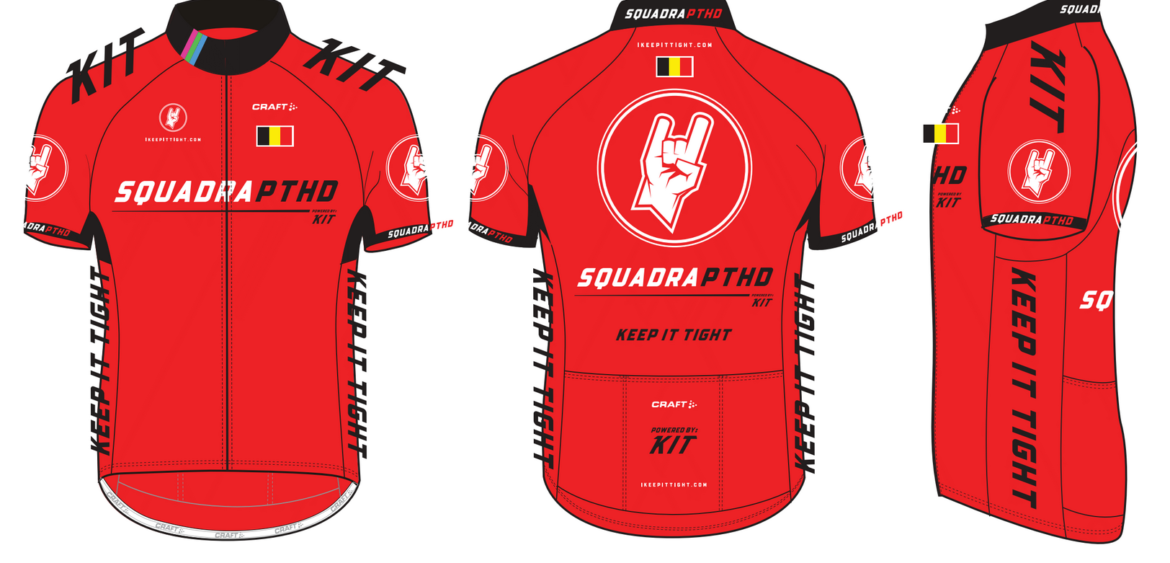
Check it! Team Keep It Tight is excited to share a new venture with you: Squadra-PTHD.
What is Squadra-PTHD, you ask? “Squadra” consists of riders within Team KIT who like to go big (centuries, gran fondos, long gravel rides, etc.) and welcome a little PTHD (put the hammer down) in their training sessions.
Why Red?
In honor of this endeavor, there is a dedicated “special edition”, thoughtfully designed Squadra-PTHD kit. This deliciously red kit is a nod to the Tour de France prize given to the “most aggressive” or “most combative” rider (like Lotto’s breakaway specialist Thomas deGendt). Squadra-PTHD isn’t a race team, so what is the connection here? Many of these Squadra rides will feel like a long breakaway, where working well together is key, sprinkled with the occasional attack and town-line sprints. Most importantly, we like red. Whatever the reason, this new kit will spice up your cycling wardrobe.
Why The Belgian Flag?
Belgium’s cycling history offers the quirk of a small population country of 11.5 million that has produced an enormous amount of successful professional road riders. The Belgian Classics, the history that predates Merckx (Rik Van Looy), the Lion of Flanders (Museeuw), and currently, stalwarts as deGendt, Wellens, Gilbert, all contribute to strike the hearts of cycling aficionados around the world. The Belgian Flag evokes the drama that warrants devotion among sports enthusiasts, as the country and cycling fans worldwide stop to celebrate the Spring Classics season and its fearless heroes. We, the roadies, the riders, the racers, all play an active role at keeping the flame of bike racing burning white-hot, embracing the Belgian flag as proxy of our love for the sport. At KIT, we rolled out our newest jersey to pay tribute to a history that predates us, and we celebrate and honor its culture with every pull, every kilometer, every town line, and every bite of frites with mayo. If you, like us, love the sport in all its glorious heroics, we’d like to welcome you into our paceline.
Squadra-PTHD will pick a handful of centuries and other long rides to perform as a team. Some of these centuries will be led by team members; other outings will be part of already established organized events, such as CRW centuries, Tour de Cure, Climb to the Clouds, D2R2, Blazing Saddles, to name a few. We will post the Squadra schedule soon but the first century will take place in April. The goal is to complete at least 7 long events in 2018, targeting the Blazing Saddles Century in late August as our main appointment of the season. This could also be a great fitness build-up for those focused on racing cross in the fall.
Whether you’d like to do all 7 or just 1 long event, Team KIT extends an invitation to all members to join and be a part of Squadra-PTHD. Not a member of Team KIT? Join here.

